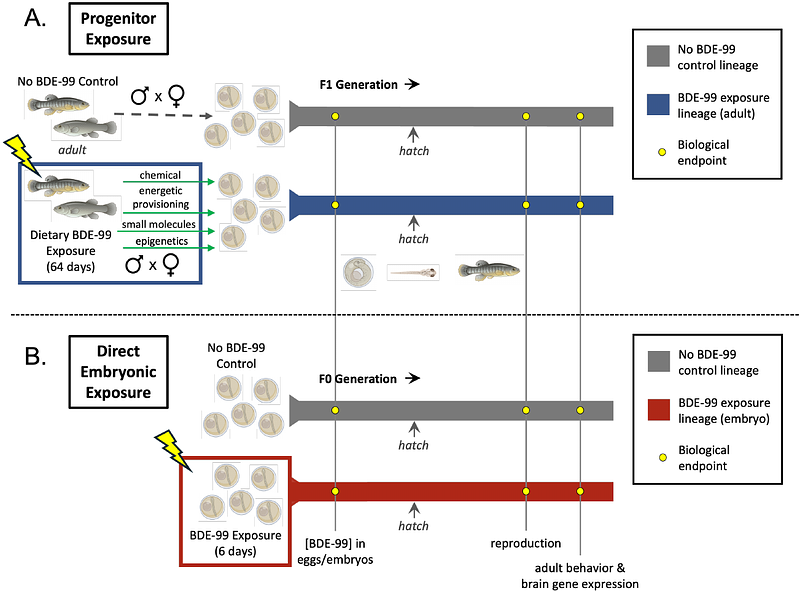Early-life PBDE flame retardant exposures cause neurobehavioral alterations in fish that persist into adulthood and vary by sex and route of exposure

Early-life PBDE flame retardant exposures cause neurobehavioral alterations in fish that persist into adulthood and vary by sex and route of exposure
McNabb-Kelada, N.; Burke, T.; Jayaraman, S.; Mills, L.; De La Torre, A.; Francoeur, M.; Schraeder, H.; Nacci, D.; Clark, B. W.; Whitehead, A.
AbstractDeveloping organisms exhibit varying susceptibility to environmental pollutants depending on the timing of exposure during development. Early-life development is particularly vulnerable, and many marine species spend early life in nearshore environments, elevating their risk of pollutant exposure. Polybrominated diphenyl ether (PBDE) flame retardants are persistent and ubiquitous pollutants, particularly in nearshore marine environments. They disrupt early-life development and pose ongoing risks for ocean health. However, whether early-life exposure influences neurotoxic effects, and whether those effects are durable throughout life, remains poorly understood. Using Fundulus heteroclitus, we tested whether early-life exposure to 2,2\',4,4\',5-pentaBDE (BDE-99) leads to persistent behavioral and molecular alterations in adulthood and whether outcomes differ by exposure route. We conducted two complementary experiments comparing progenitor (maternal) exposure and direct waterborne exposure during embryonic development. Similar doses to developing fish were achieved in both experiments. After hatch, all fish were reared in clean water until adulthood over two years later, at which time we assessed impacts on behavior and brain gene expression. Both exposure routes led to long-term hyperactivity and reduced anxiety-like behavior, but specific effects varied by dose and sex. Progenitor exposure altered behavior and the brain transcriptome in F1 males (females not tested), whereas direct embryonic exposure affected behavior in females and not males. These findings highlight the importance of maternal influences, such as chemical metabolites, altered lipid provisioning, small molecules, and epigenetic imprinting, alongside chemical transfer, in shaping the long-term persistence of behavioral and molecular effects from early-life exposure. The distinct effects between exposure routes suggest that dosing with chemical alone is not the only determinant of toxicity. We conclude that maternal factors that are modified by exposure significantly contribute to health outcomes in developing offspring, emphasizing the need to consider exposure route when assessing risks from persistent pollutants. Given that maternal and environmental exposures co-occur in nature, future studies should assess their combined impacts to better predict real-world risks.